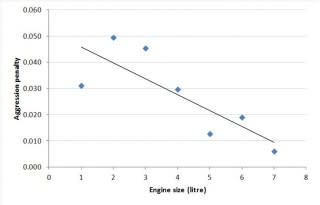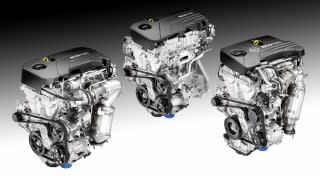Small Engines May Use More Fuel Than You Expect, In Europe Especially
Decreasing an engine's displacement is one of the most straightforward ways to increase fuel efficiency.
Or is it?
According to research firm Emissions Analytics, the high fuel-economy ratings of downsized engines may not always translate to the real world.
MORE: Do Small Turbo Engines Really Give Better Gas Mileage?
Claiming to have tested over 500 model variants, researchers say vehicles with smaller engines can have more difficulty replicating their rated fuel economy in the real world because of the way they're driven.
Abrupt acceleration is bad for fuel economy, particularly in smaller engines, which have to rev higher and harder to produce the power needed for quick speed changes.

This is not something that's apparent in the gentle and controlled conditions of fuel-economy testing, researchers say. And it produces increasing discrepancies between ratings from those tests and real-world results.
Researchers analyzed vehicles by engine size, and measured the variance between government-rated fuel economy and real-world test results.
For U.S. test cycles--which they noted are "much harsher" than those in Europe--the variance between the EPA combined rating and the real-world figures stayed within 3 percent one way or another.
Smaller engines had slightly higher variances, but all were well within the range produced by more or less aggressive driving styles.
DON'T MISS: 2014 Ford Fiesta EcoBoost: Gas Mileage Test Returns 40 MPG
Averaging all results together, researchers concluded that cars sold in the U.S. tend to come pretty close to the combined fuel-economy ratings on their window stickers.
But it was a very different story in the U.K., where average fuel economy was 18 percent worse than the ratings in the real world.
The worst offenders were vehicles with engines displacing 1.0 liter or less (no sub-1.0-liter engines are available in the U.S.), which missed the mark by 36 percent. Engines between 1.0 liter and 2.0 liters were second worst, at 21 percent.

In fact, no U.K. vehicles at all matched their rated fuel economy.
For engines between 2.0 and 3.0 liters, observed fuel economy averaged 15 percent less than the rating. That figure was 14 percent for engines between 3.0 and 4.0 liters, and 15 percent for engines between 4.0 and 5.0 liters.
Vehicles with engines over 5.0 liters put in the best performance, relatively speaking, with a 1-percent decrease compared to fuel-economy ratings that were likely pretty low to begin with.
ALSO READ: GM's New 3- And 4-Cylinder Engines Face Off Against Ford, VW
So while smaller engines tended to have a bigger variance than medium-sized ones in both countries, there were bigger discrepancies across the board in the U.K.
That clearly has to do with the European test procedure, which researchers note features fewer--and gentler--episodes of acceleration than the U.S. EPA testing cycles.
Still, very low-displacement engines (1.3 liters and below) are quite new to the North American market--and more and more will be appearing.
So buyers of those cars may do well to spend a little extra time checking real-world results (on the EPA's FuelEconomy site and crowdsourced sites like Fuelly) before signing on the dotted line.
_______________________________________________

 Yahoo Autos
Yahoo Autos 
